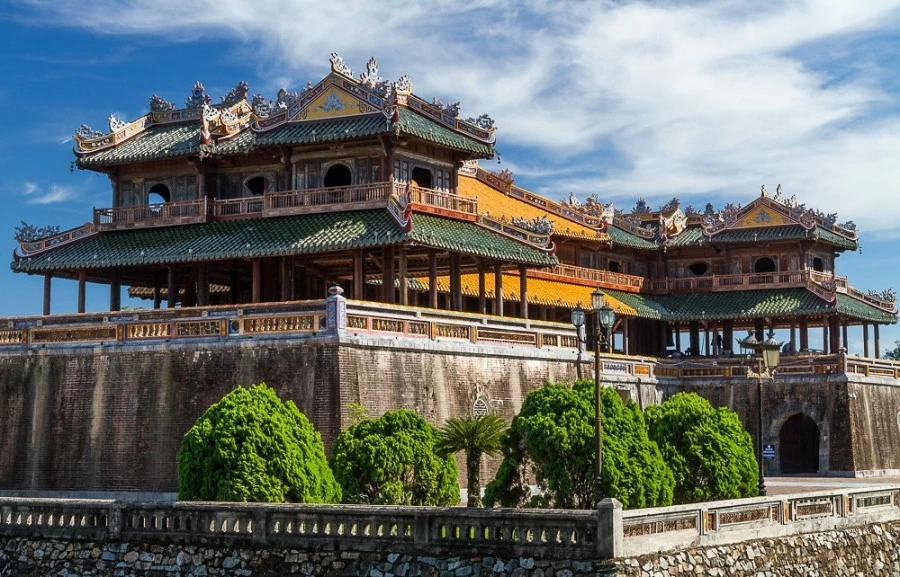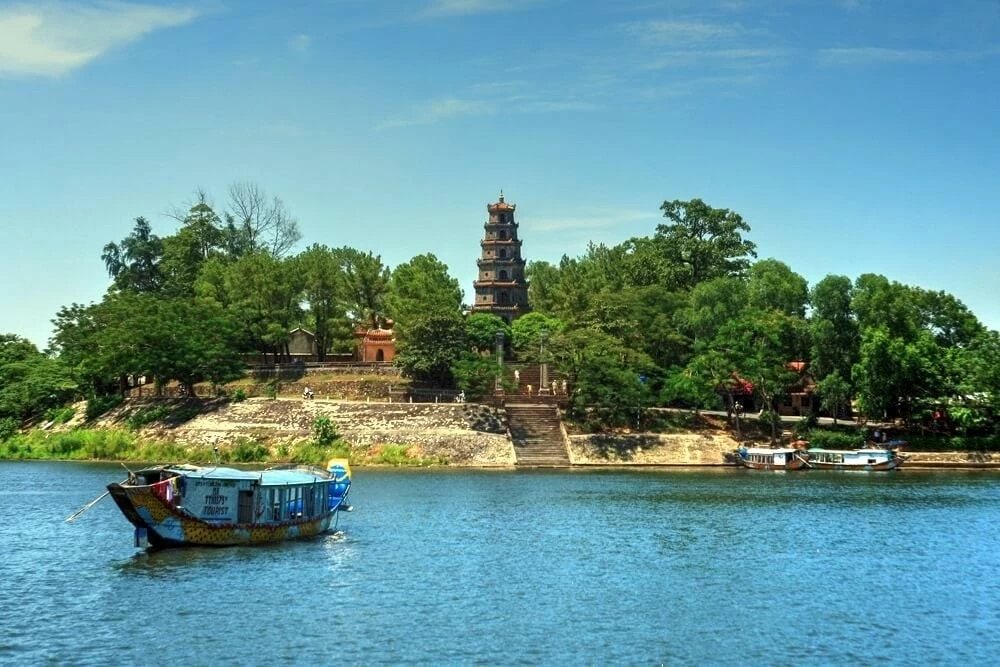
Thua Thien-Hue - The timeless imperial capital welcoming global visitors
Latest
 |
| The Imperial City in Hue. (Source: Traveloka) |
Incredibly, Thua Thien-Hue has been increasing its economic growth point, targeting the pivotal areas of the economy that include tourism, industry, agriculture, and construction. The province's GRDP reached USD 3.04 billion in 2023, with a growth rate of 7.03%.
The services sector, bolstered by the recovery of tourism, accounted for 48.84% of the GRDP. Exports from Hue totalled USD 1.12 billion in 2023, reflecting a rebound despite global economic challenges. The province's industrial parks, such as the Phong Dien and Sai Gon-Chan May parks, are attracting investments in electronics, information technology, and agro-processing.
The Chan May-Lang Co Economic Zone is particularly important due to its strategic location and deep-water seaport. In terms of infrastructure, the province is targeting investments of USD 117 million in the coming months, with a focus on industry, agriculture, and infrastructure development. These efforts when coupled with the skilled workforce and the relatively low labour costs serve to explain why the province is good for investors and a province with an remarkable economic outlook.
A window into Vietnam’s imperial era
Hue’s historical significance centres around its role as the capital of the Nguyen Dynasty from 1802 to 1945. Within the city, landmarks such as the Imperial City, the royal tombs, and ancient pagodas preserve the legacy of Vietnam’s last royal rulers. Each site brings the grandeur of the past to life, offering both historical depth and visual splendour.
The region's main attraction is The Imperial City (Dai Noi), which is recognised as a World Heritage Site. Consisting of 20 massive structures surrounded by walls and outer moats, this place was at the very core of the politics and culture of the Nguyen Dynasty. Historically the inner sanctum known as the Purple Forbidden City was accessible only to the royal family and their closest aides. People can hike today through a set of elegant gates, palaces and courtyards that have carved wooden ceilings, lacquered wooden columns and splendid gardens.
The Noon Gate (Ngo Mon), the Citadel's main entrance, impresses visitors with its massive construction and elaborately carved roof. Inside, the Hall of Supreme Harmony (Dien Thai Hoa) is the most prominent palace in the Imperial City, where emperors historically held court festivities and formal events. Recent restoration works have rejuvenated areas of the complex, allowing visitors to better appreciate its architectural beauty and historical significance.
Furthermore, Hue's cultural landscape extends beyond the Citadel, with several royal tombs scattered along the banks of the Perfume River. These tombs, particularly those of Emperors Minh Mang, Tu Duc, and Khai Dinh, display a harmonious blend of nature, architecture, and history.
Situated on Ha Khe Hill, overlooking the Perfume River, Thien Mu Pagoda stands as one of Hue's most iconic spiritual landmarks. The seven-story tower, built in 1601, is a symbol of the city and central Vietnam's deep-rooted Buddhist traditions. Visitors can explore the grounds, which include several shrines, statues, and gardens. The peaceful setting, combined with panoramic views of the river, makes it a popular spot for both spiritual reflection and photography.
 |
| A poetic photograph of Thien Mu pagoda situated by the Perfume River. (Source: Vinpearl) |
The natural beauty of Thua Thien-Hue province
Beyond the city’s historic core, the natural beauty of Thua Thien-Hue Province entices outdoor enthusiasts. Bach Ma National Park, less than an hour from the city, invites adventurers to explore its misty mountain peaks, waterfalls, and dense forests. Hiking trails wind through diverse ecosystems, offering opportunities to see rare wildlife and panoramic views of the region.
Besides, Lang Co Beach with its soft white sand and crystal-clear waters provides a peaceful retreat for tourists seeking relaxation or water activities. The beach, located along Vietnam’s central coastline, is often described as one of the country’s most beautiful coastal destinations.
Last but not least, the Perfume River (Song Huong), winding gracefully through the heart of Hue, holds a special place in the city’s identity. Renowned for its serene beauty, the river’s name originates from the fragrant blossoms that once drifted from orchards upstream, giving the water a light, floral scent during autumn. Today, it serves not only as a picturesque backdrop to Hue's historical landmarks but also as a symbol of the city’s poetic spirit. Locals and travellers alike gather by the riverbanks for strolls or to enjoy Hue’s traditional music, performed on dragon boats.
Culinary delights
Hue cuisine has long been known for its variety and complexity since Hue people believe that food should not only be excellent but also visually appealing. One of Hue’s most famous dishes, Bun Bo Hue is a spicy noodle soup that captivates the senses with its robust, aromatic broth. Made from slow-cooked beef bones, lemongrass, and chilli, the soup features tender slices of beef, pork, and sometimes congealed blood, creating a hearty and satisfying meal.
Another signature snack in Hue is Banh Beo, consisting of delicate, steamed rice cakes topped with minced shrimp, crispy pork skin, and scallions. These small, flavorful bites are served in tiny bowls, accompanied by a light fish sauce for dipping.
Like with many royal cities, Hue also features royal tea which is made from dried lotus flower, chrysanthemum and some other herbs that are usually served with a variety of sweets. An example of the sweets can be Che Hue - a sweet soup prepared with the use of mung beans, lotus seeds and fruits - bears the refined imprint of the imperial court.
 |
| Locals and tourists enjoy Hue cuisine at Dong Ba market. (Source: VnExpress) |
Hue’s transformation from imperial capital to a modern destination has been carefully managed to maintain its cultural integrity while embracing the opportunities of the present day. With its deep historical roots, diverse culinary offerings, natural beauty, and emerging economic potential, Hue remains a captivating city for both travellers and investors.

















